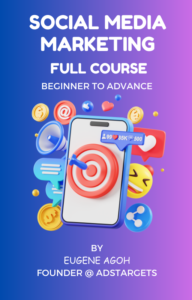Landing pages are the guardians of success in the digital sphere, where conversions are king, and every click matters. While creating an engaging landing page is an artistic endeavor, optimizing it for optimal performance necessitates a methodical approach.
Landing pages play a pivotal role in converting website visitors into leads or customers. However, creating an effective landing page is far from just design and content—it’s also about continuously refining and optimizing its performance.
Enter A/B testing, a powerful technique that allows marketers to experiment with different elements of their landing pages to identify what resonates best with their audience and drives maximum conversions.
In this comprehensive guide, we will explore the ins and outs of landing page A/B testing strategies, offering actionable insights and best practices to help you achieve optimal results.


Table of Contents
ToggleUnderstanding A/B Testing
A/B testing, also known as split testing, involves comparing two versions of a webpage (A and B) to determine which one performs better in terms of a predefined goal, such as click-through rate (CTR), conversion rate, or bounce rate.
By making incremental changes to elements such as headlines, images, call-to-action (CTA) buttons, forms, and layout, marketers can gather data-driven insights into what drives user engagement and ultimately leads to conversions
How A/B Testing Works
In an A/B, you take a webpage or app screen and modify it to create a second version of the same page. This chance can be as simple as a single headline, button or be a complete redesign of the page.
Then, half of your traffic is shown the original version of the page (known as control or A) and half are shown the modified version of the page (the variation or B).
As visitors are served either the control or variation, their engagement with each experience is measured and collected in a dashboard and analyzed through a statistical engine.
You can then determine whether changing the experience (variation or B) had a positive, negative or neutral effect against the baseline (control or A).
Why A/B Testing Strategies Matter for Landing Pages


Landing pages serve as the gateway to conversions, making them a critical component of any digital marketing campaign. Here is why it is essential for optimizing landing page performance:
Data-Driven Decision Making: A/B testing provides empirical evidence to support design and content decisions, allowing marketers to move away from guesswork and rely on concrete data.
Continuous Improvement: By iteratively testing and refining landing page elements, marketers can incrementally improve performance over time, maximizing conversion rates and ROI.
Audience Insights: A/B testing helps marketers gain a deeper understanding of their target audience’s preferences, behaviors, and pain points, enabling more targeted and effective messaging.
Competitive Advantage: In a crowded digital landscape, staying ahead of the competition requires constant experimentation and optimization. A/B testing allows marketers to identify winning strategies and maintain a competitive edge.
A/B Testing Process
Here is a breakdown of the process:
Identify Your Objective: Start by clearly defining what you want to achieve through A/B testing. Whether it’s increasing click-through rates, improving conversion rates, or enhancing user engagement, having a specific goal will guide your testing process.
Hypothesis Formation: Formulate a hypothesis about what changes you believe will lead to better performance. This could be changing the color of a call-to-action button, altering the headline of an email, or modifying the layout of a webpage.
Create Variants: Develop two or more versions of the element you want to test. The original version is often referred to as the “control,” while the alternate version is the “variant” or “treatment.”
Ensure that each variant differs in only one aspect from the others to accurately isolate the impact of that change.
Randomized Assignment: Randomly assign your audience or users into different groups, with each group exposed to only one version of the element being tested. This ensures that the groups are statistically similar and any differences in performance can be attributed to the variations being tested.
Implement Tracking: Set up tracking mechanisms to measure the performance of each variant. This could involve using analytics tools to monitor metrics such as click-through rates, conversion rates, bounce rates, or any other key performance indicators (KPIs) relevant to your objective.
Run the Experiment: Launch the A/B test and collect data over a predetermined period. It’s crucial to run the test for a sufficient duration to account for factors like daily or weekly fluctuations in traffic or user behavior.
Additionally, ensure that your sample size is large enough to yield statistically significant results.
Statistical Analysis: Once you’ve collected enough data, perform statistical analysis to determine if there’s a significant difference in performance between the variants. Common statistical techniques used for A/B testing include t-tests, chi-square tests, and Bayesian inference.
Draw Conclusions: Based on the results of your analysis, determine which variant performed better in achieving your objective. If one variant outperforms the others significantly and consistently, you can conclude that the change implemented in that variant is likely to be effective.
Implement Winner: Implement the winning variant as the new default option. However, remember that A/B testing is an iterative process, and there’s always room for further optimization. Use the insights gained from your A/B test to inform future experiments and continuously refine your strategies.
Document and Learn: Document the findings of your A/B test, including the hypothesis, variants tested, results, and any insights gained. Reflect on what worked well and what didn’t, and use this knowledge to inform future testing and decision-making processes.
Key Elements to Test on Landing Pages
When conducting A/B tests on landing pages, it’s essential to focus on elements that have the greatest impact on user behavior and conversion rates. Listed below are some key elements to consider testing:
Headlines: The headline is often the first thing visitors see when they land on a page. Test different headline variations to determine which one grabs attention and effectively communicates value proposition.
Images and Graphics: Visual elements can evoke emotions and influence user perception. Experiment with different images, graphics, and videos to see which ones resonate best with your audience and drive engagement.
Call-to-Action (CTA) Buttons: The design, copy, color, size, and placement of CTA buttons can significantly impact click-through and conversion rates. Test different variations to find the optimal combination that encourages action.
Form Fields: The length and complexity of form fields can affect conversion rates. Test different form lengths, input fields, and required fields to strike the right balance between capturing valuable information and minimizing friction.
Copywriting: The language and tone used in headlines, subheadings, body text, and CTAs can influence user engagement and persuasion. Test different copywriting styles, messaging angles, and value propositions to see what resonates best with your audience.
Layout and Design: The overall layout, structure, and visual hierarchy of a landing page can impact user navigation and attention. Experiment with different layouts, color schemes, fonts, and whitespace to optimize user experience and conversion flow.
Best Practices for Landing Page A/B Testing
While A/B testing can yield valuable insights, it is essential to follow best practices to ensure accurate results and meaningful conclusions. Some of the best practices to consider when conducting A/B tests on landing pages include:
Set Clear Goals: Before conducting A/B tests, define clear, measurable goals and objectives. Whether it is increasing click-through rates, improving conversion rates, or reducing bounce rates, having specific goals will guide your testing strategy and help you evaluate success.
Test One Variable at a Time: To isolate the impact of individual elements, test one variable at a time. Testing multiple elements simultaneously can muddy the results and make it challenging to pinpoint what caused changes in performance.
Ensure Adequate Sample Size: For statistically significant results, ensure that your test has a sufficient sample size. Ideally, aim for a large enough samples to detect meaningful differences with a high level of confidence.
Run Tests for an Adequate Duration: Allow tests to run for long enough duration to capture variations in user behavior over time. Avoid prematurely ending tests, as this can lead to misleading conclusions and inaccurate results.
Segment Your Audience: Consider segmenting your audience based on demographics, behavior, or other characteristics to tailor testing variations to specific user segments. This allows for more targeted and personalized testing strategies.
Monitor Results Closely: Continuously monitor test results throughout the duration of the experiment to identify any anomalies or unexpected patterns. Be prepared to adapt your testing strategy based on emerging insights and trends.
Document Findings and Learning: Keep detailed records of A/B test results, including variations tested, metrics measured, and conclusions drawn. Documenting findings and learning ensures that insights are captured and can be applied to future testing iterations.
Case Study: A/B Testing Success Story
To illustrate the effectiveness of A/B testing, let us consider a hypothetical case study of a software-as-a-service (SaaS) company looking to optimize its landing page for a free trial offer. The company conducts an A/B test to compare two variations of its landing page:
- Version A: Features a prominent headline highlighting the benefits of the product, a concise form with minimal fields, and a green CTA button with the text “Start Your Free Trial Now.”
- Version B: Employs a different headline emphasizing the product’s unique features, a longer form with additional optional fields for more detailed information, and a blue CTA button with the text “Get Started.”
After running the A/B test for two weeks and collecting data on conversion rates, the company discovers that Version A outperforms Version B, resulting in a 20% increase in free trial sign-ups. By leveraging insights gained from the A/B test, the company adopts the winning elements from Version A and implements them on its landing page, resulting in sustained improvements in conversion rates and customer acquisition.
Advanced A/B Testing Strategies
#1. Multivariate Testing:
While traditional A/B testing compares two variations of a single element, multivariate testing allows you to test multiple variations of multiple elements simultaneously. This advanced technique enables you to analyze the interaction effects between different elements and identify the most effective combination for achieving your goals.
#2. Sequential Testing:
Instead of comparing two variants simultaneously, consider conducting sequential A/B tests over time. Start with the control version of your landing page and gradually introduce variations based on the results of previous tests. This iterative approach allows you to uncover incremental improvements and refine your strategies continuously.
#3. Personalization and Segmentation:
Tailor your landing page experience to different audience segments based on demographics, interests, or previous interactions. Implement personalized content, offers, and messaging to create a more relevant and engaging experience for each user. Test variations targeted at specific segments to identify the most effective strategies for different audience groups.
#4. Seasonality and Contextual Factors:
Take into account seasonal fluctuations, holidays, and contextual factors when planning and interpreting A/B tests. What resonates with your audience during one season or event may not necessarily perform the same way at other times of the year. Adapt your testing strategies accordingly to account for changing trends and consumer behavior.
#5. Qualitative Feedback Integration:
Incorporate qualitative feedback from users into your A/B testing strategy to gain deeper insights into their preferences and pain points. Conduct surveys, gather feedback through user interviews, and analyze user behavior data to uncover areas for improvement and testing opportunities. Use this feedback to inform test hypotheses and refine your landing page elements.
Conclusion
Landing page A/B testing is a powerful tool for optimizing conversion rates, enhancing user experience, and driving meaningful results in digital marketing campaigns.
By systematically testing and iterating on various elements of landing pages, marketers can uncover valuable insights into user behavior, preferences, and motivations.
By diligently following the process and best practices, setting clear goals, and continuously monitoring results, companies can leverage A/B testing to gain a competitive edge and maximize ROI. Embrace the iterative nature of A/B testing, and let data guide your decision-making process as you strive for continuous improvement in your digital marketing efforts for absolute success.





